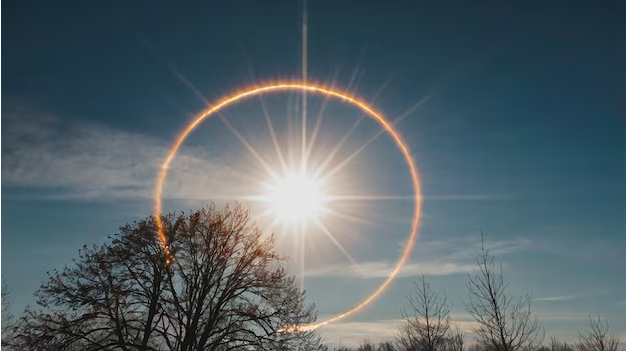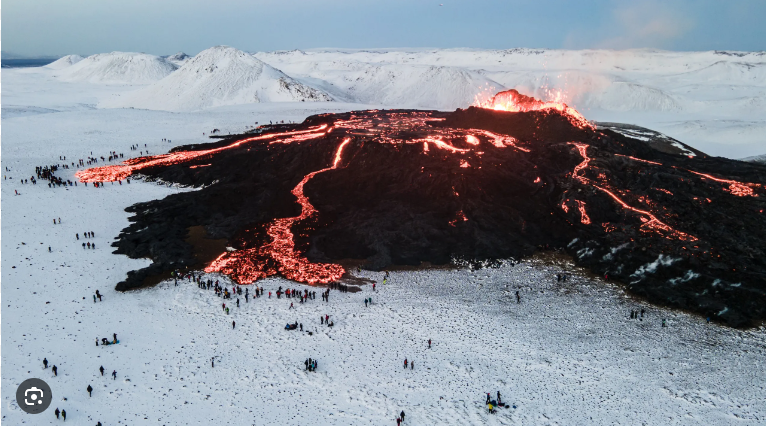Wind Cave has been considered sacred by Native Americans for hundreds of years. It wasn’t until 1881, however, that the cave was discovered by Europeans. Two brothers, Jesse and Tom Bingham, heard a loud whistling noise while passing through the region. Upon investigation, they discovered a small hole in the ground from which a strong gust of wind was emanating. This small hole is the only natural entrance to the cave that has ever been found.
After the cave’s discovery, several mining claims were established in the area. J. D. McDonald managed one of those claims for the South Dakota Mining Company. Mining operations at Wind Cave turned out to be an unsuccessful venture, but McDonald and his family discovered that they could make money by giving cave tours and selling cave formations. In 1891, the McDonalds teamed up with John Stabler and formed the Wonderful Wind Cave Improvement Company. The company widened the entrance to the cave, built a wooden staircase, erected a hotel near the cave entrance, and started offering stagecoach rides to the cave from Hot Springs.

In 1893, there were stirrings of trouble between the Stabler and McDonald families. J. D. and Alvin McDonald headed off to an exposition in Chicago to promote the cave. Alvin got typhoid fever on the trip and died shortly thereafter. After his death, arguments broke out between the families about how profits were being split, and the fight ended up in court. After years of courtroom battles, the Department of the Interior decided that since there was no mining and no homestead activity involved, neither party held any ownership in the cave; in 1901, it withdrew the property from availability as a homestead. In 1903, Theodore Roosevelt, a frequent visitor and supporter of conservation, signed a bill creating Wind Cave National Park.
Wind Cave became the eighth national park in the federal park system and was the first to be set aside to preserve a cave. In 2011, the National Park Service increased the size of the park with the purchase of an additional 5,555 acres adjacent to the original park boundaries. The acquisition, originally the Sanson Ranch, includes a thousand-year-old buffalo jump and a historic homestead. There is limited access to the new area while the park develops a land management plan for the acquisition. Check at the information desk when you arrive to see if new hiking or interpretive activities have been developed for the area. The park is located just 11 miles north of Hot Springs on U.S. 385, and today presents two faces to the visitor.

On the surface, Wind Cave National Park, at more than 33,000 acres, boasts over 30 miles of hiking trails. The mixed-grass prairie ecosystem supports abundant wildlife, including bison, mule deer, whitetail deer, prairie dogs, pronghorn, wild turkeys, and elk. The topography of the park is vastly different from that of the Northern Hills. Lower-elevation and eroded round hills provide scenic viewing as far as the human eye can see. It is a place where east meets west, where the Great Plains prairie meets the ponderosa pine forest. It’s a wonderful place to watch the not infrequent summer thunderstorms cross the plains.
Below the surface, under just one square mile of the park, lies over 143.16 miles of explored cave passages. Wind Cave is the third-longest cave in the United States and the seventh-longest cave in the world. It may move up in the standings, however, as it is estimated that only 10 percent of the cave has been explored and mapped.

Wind Cave is famous for its boxwork, an unusual type of speleothem (cave formation). Most cave formations are created when dripping or seeping water deposits calcium on the cave walls and ceilings, forming the stalactites (which hang from the ceiling like icicles) and stalagmites (built up from the floor) that most visitors expect to see in a cave. Since Wind Cave is relatively dry, the formations in the cave are more subtle. Boxwork is made of thin slices of calcite that project from the cave walls and intersect with each other in a honeycomb-like fashion. The pattern looks like a collection of diamond and rectangular boxes protruding from the walls and ceilings. It is suspected that the boxwork formation results from the uniform seepage of water, literally through the pores of the rock, instead of from larger cracks and crevices. Other common formations found in the cave include popcorn (knobby deposits of calcite) and frostwork (thin needles of calcite crystals in patterns that resemble a three-dimensional version of frost on a window).
The latest addition to Wind Cave is the discovery of a new cave on the park grounds, announced in the summer of 2015. Persistence Cave was named as a tribute to its discoverer, who spent years looking for a new cave on the property. The cave is not open to the public and is currently only 26 feet long and two feet high. The entry to the cave is full of sediment rich in ice-age fossils dating back 11,000 years. Wind Cave has partnered with the Mammoth Site in Hot Springs to study the fossils as they are unearthed. As the sediment, full of thousands of small bones, is removed, the cave entry will be enlarged and exploration will begin in earnest to see if it leads to larger passages. Persistence Cave is located less than a mile from Wind Cave, and they may well be connected.
Visitors Center
The first place to stop is the Wind Cave Visitor Center (26611 U.S. 385, 605/745-4600, Oct.-Apr. daily 8am-4pm, spring and fall daily 8am-5pm, peak summer daily 8am-6pm or 7pm). From the north, the visitors center is on the right just past the junction of U.S. 385 and Highway 87. From the south, the road to the visitors center is a left off U.S. 385 and is clearly marked with park signage. It is here that you can find maps, arrange your cave tour, obtain free backcountry camping permits, or purchase National Parks and Federal Recreation Lands Passes. There is also a nice bookstore on-site. There are no dining facilities.
Rangers at the visitors center can provide you with information about activities going on at the time of your visit and answer any questions you may have about the park and its environment. They are usually aware of where the bison herd has roamed and will provide updates if seeing the herd is also on your agenda.
There is no entrance fee to Wind Cave National Park, and hiking and backcountry camping is free. Cave tours and camping at the campground are fee-based services.








 Photographer Finds Locations Of 1960s Postcards To See How They Look Today, And The Difference Is Unbelievable
Photographer Finds Locations Of 1960s Postcards To See How They Look Today, And The Difference Is Unbelievable  Scientists Discover 512-Year-Old Shark, Which Would Be The Oldest Living Vertebrate On The Planet
Scientists Discover 512-Year-Old Shark, Which Would Be The Oldest Living Vertebrate On The Planet  Hus til salg er kun 22 kvadratmeter – men vent til du ser det indvendigt
Hus til salg er kun 22 kvadratmeter – men vent til du ser det indvendigt  Nearly Frozen Waves Captured On Camera By Nantucket Photographer
Nearly Frozen Waves Captured On Camera By Nantucket Photographer  Superknepet – så blir snuskiga ugnsformen som ny igen!
Superknepet – så blir snuskiga ugnsformen som ny igen!  It’s Official: Astronomers Have Discovered another Earth
It’s Official: Astronomers Have Discovered another Earth  Meteorite That Recently Fell in Somalia Turns Out to Contain Two Minerals Never Before Seen on Earth
Meteorite That Recently Fell in Somalia Turns Out to Contain Two Minerals Never Before Seen on Earth 